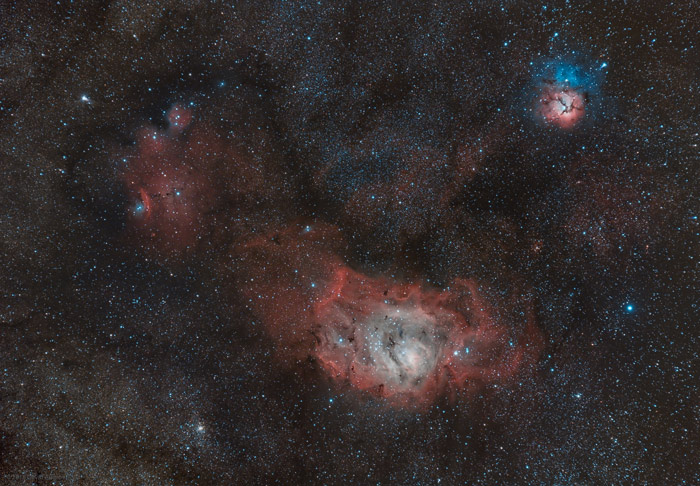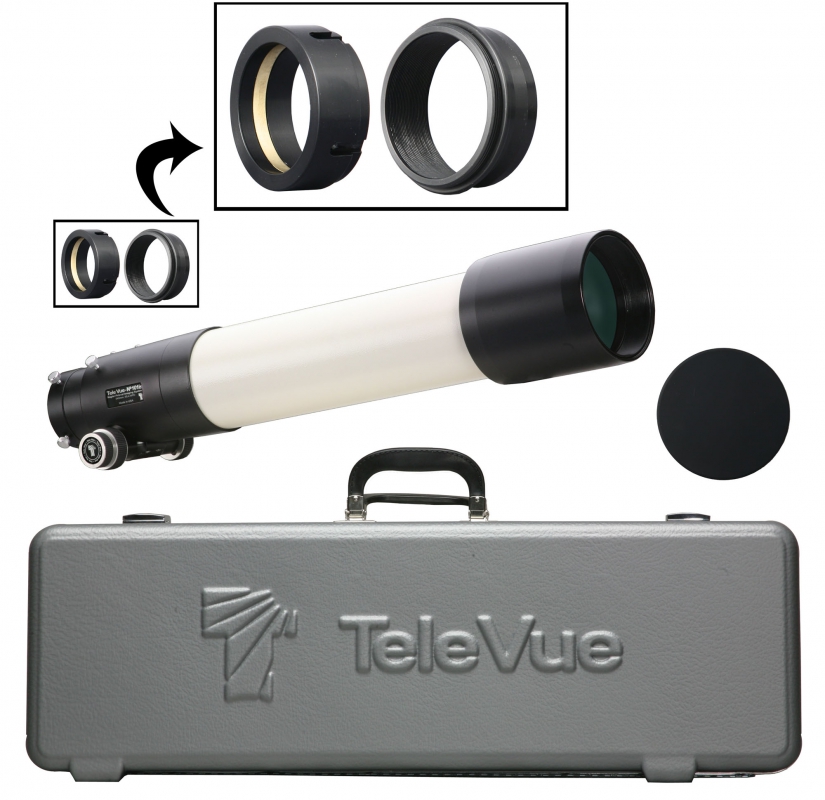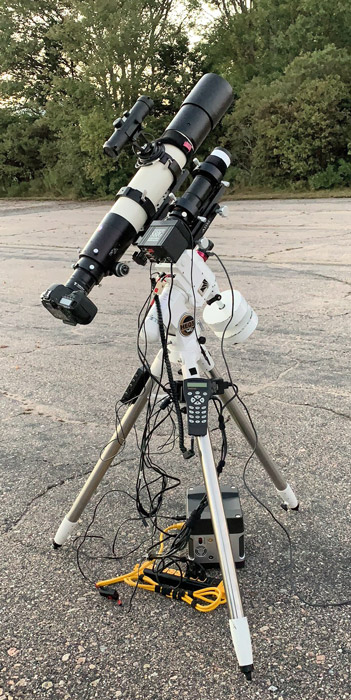Tele Vue-NP101is Imaging the Skies of Rhode Island!
We found unique takes on familiar deep-sky objects on David Augros’ AstroBin account. They were taken with our Tele Vue-NP101is refractor (photo/visual, 101mm, f/5.4 APO) using our Large Field Corrector (LCL-1069) and modified Canon EOS 6D DSLR.

We asked David how he got involved in astro-imaging and why he choose this scope. He told us in his own words.
I have been a visual astronomer all my life, but I only recently began imaging, finally caving-in to the promise of digital convenience. I have been using the Tele Vue-NP101is since 2016 and have been very pleased with all aspects of the instrument, but it’s the optics that really impress. Along with the large field corrector, this rugged refractor gives me geometrically perfect stars well outside the center of my images. The tube’s wide open focuser gets plenty of light onto my full frame Canon 6D sensor, illuminating right to the edge of the field. If I take good flat frames for my imaging session, I often will not even need to crop, except to eliminate stacking artifacts. Combined with the instrument’s 540-mm focal length, I find I have a nice balance between a generous wide field and fine details in my final images.

David told us how the modified Canon works with the scope:
The Canon is astro-modified and is very sensitive to emission nebulae. When I first built this rig and pointed it at the Lagoon Nebula for a 300-second exposure at ISO 800, I was absolutely floored by what I saw on the LCD on the back of the camera. I had to double check that WiFi was turned off because it really looked as if I had downloaded an internet image. Anyway, I’ve been hooked ever since.

Next, David tells us about his favorite imaging location:
I do all my imaging from the Frosty Drew Observatory in Charlestown, Rhode Island. At less than an hour from light polluted Providence, where I live, it has some of the darkest skies in the state, especially to the south over the ocean. The director, Scott MacNeill, is a great supporter of local astrophotographers and runs outreach programs at the facility for Brown University. I really enjoy taking in the dark sky while listening to the waves crash on the nearby beach as my imaging rig whirs away and collects photons. Since I need to transport, build-up and tear-down my rig for every session, I really appreciate how lightweight this fast f/5 scope is. My HEQ5 has no trouble keeping it steady along with all the other gear I’m using.
David’s portable setup consists of the Tele Vue-NP101is refractor with Tele Vue Large Field Corrector (LCL-1069) installed and modified Canon EOS 6D as the imager. A Mini Borg 50 with SBIG SG-4 is used for guiding. All this is carried on a SkyWatcher HEQ5 PRO mount. Processing is done using Adobe Lightroom and Pixinsight.
- Dave’s AstroBin and Instagram accounts
- Frosty Drew Nature Center and Observatory website
- Information on the Tele Vue-NP101is telescope (mobile site)
- Why Choose Tele Vue Telescopes and warranty (mobile site)


Did you observe, sketch, or image with Tele Vue gear? We’ll like your social media post on that if you tag it #televue and the gear used. Example:
#televue #tv85 #ethos #jupiter
Do you want your Tele Vue images re-posted on Tele Vue Optics’ Social Media accounts? Use this hashtag for consideration:
#RPTVO


